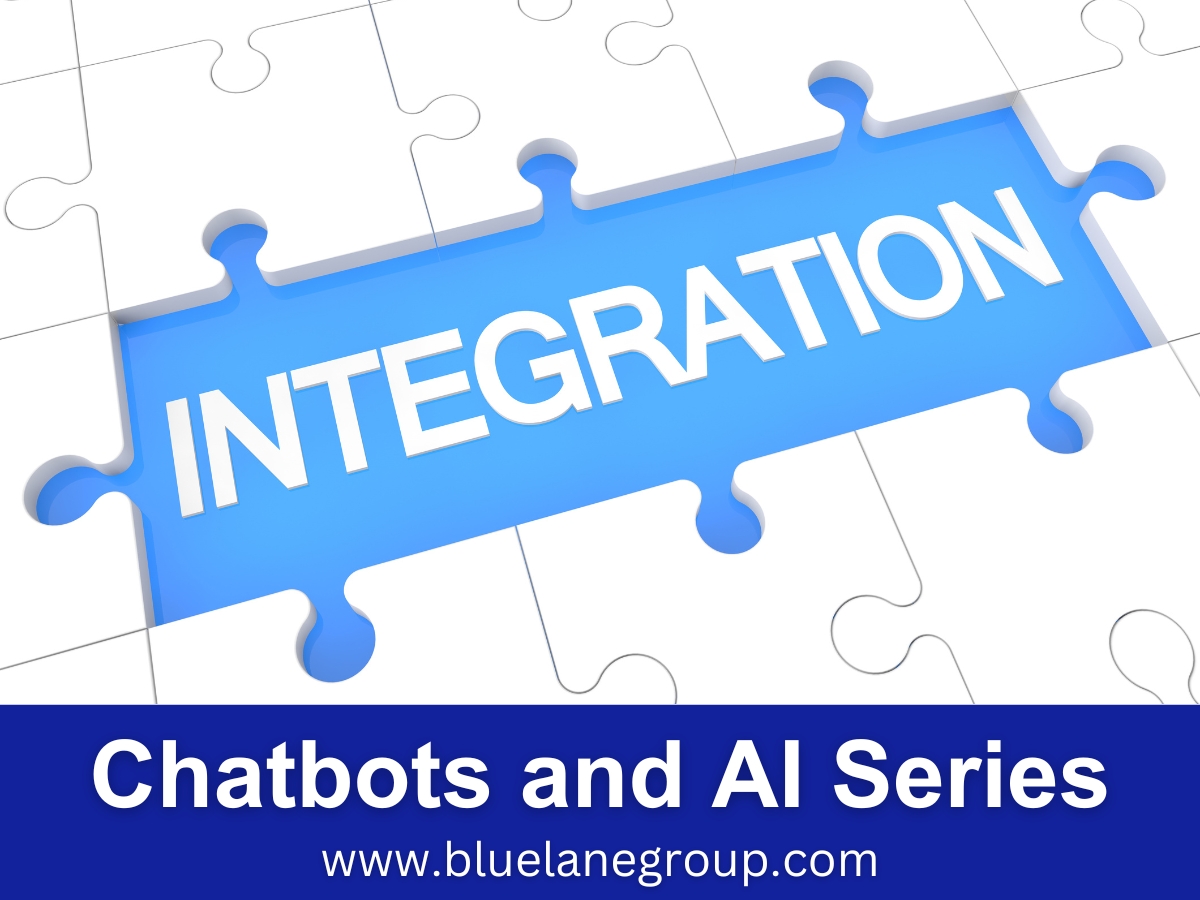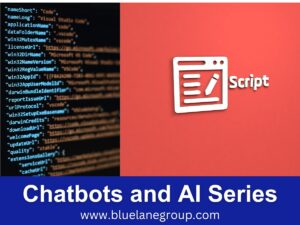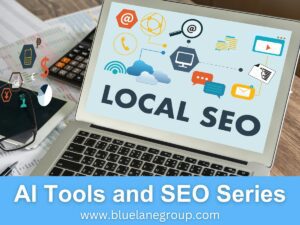This guide explores the world of chatbot integrations, spotlighting their transformative impact on modern business infrastructures. We’ll uncover how integrating chatbots with existing systems and platforms can elevate customer interactions, streamline operations, and provide more personalized user experiences in the digital era.
Quick Rundown – For the Digital Strategist:
- Chatbot integrations are revolutionizing how businesses connect their various digital tools and platforms. By seamlessly merging chatbots with CRM systems, help desks, e-commerce platforms, and more, organizations can automate data transfer, provide real-time support, and create a unified digital experience. These integrations ensure consistency in customer interactions and reduce manual data entry, leading to increased efficiency and accuracy.
- Chatbot integrations bridge disparate systems in an age where seamless user experience is paramount. By leveraging these integrations, businesses can deliver timely and contextually relevant responses, boosting customer satisfaction. As organizations continue to embrace digital transformation, the strategic integration of chatbots will become essential in maintaining a cohesive, efficient, and customer-centric digital ecosystem.
Welcome to the fifteenth Blue Lane Group article in the Best Chatbots for Customer Service: Blueprint for Success in 2023 series. These posts examine the essential chatbot topics of customer service automation, exploring how chatbots revolutionize interactions, enhance user satisfaction, and redefine the benchmarks for excellence in modern customer-centric businesses.

Disclosure: The digital products mentioned in this article are highly regarded in the marketplace and are endorsed by the Blue Lane Group staff. We may earn a commission at no additional cost if you purchase through the provided links.
Table of Contents
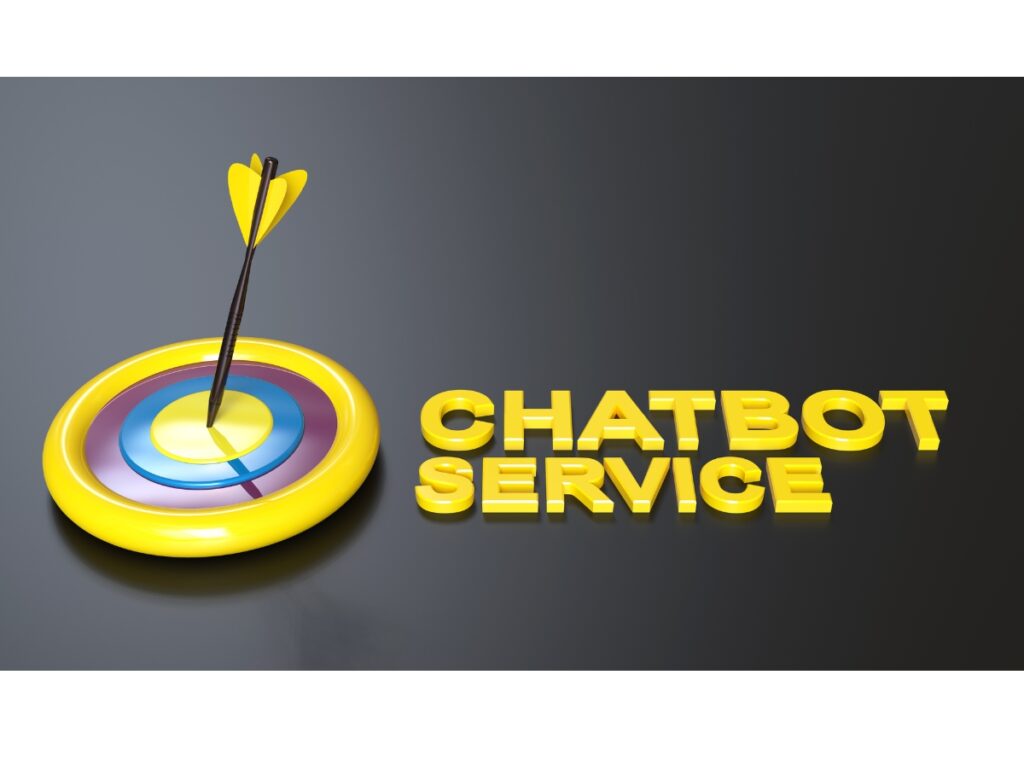
Introduction: The Power of Chatbot Integrations
In the rapidly evolving digital landscape, businesses are on a relentless quest for innovative tools to streamline operations, boost productivity, and enhance customer experiences. At the heart of this transformation lies the potential of chatbot integrations.
Beyond technological enhancements, these integrations are reshaping the foundation of business interactions. Companies can bridge gaps by integrating chatbots into various platforms and tools, ensuring fluid communication and automated assistance.
This elevates user experiences and drives businesses closer to their goals, fostering efficiency and targeted engagement.
Exploring the Core Benefits of Chatbot Integrations
The allure of chatbot integrations goes beyond mere automation. Integrated chatbots bring a suite of benefits that can redefine business operations. They offer consistent user experiences across various platforms, ensuring customers receive uniform, high-quality assistance.
This seamless experience is further augmented by the ability of chatbots to tap into real-time data, ensuring responses are quick but also accurate and contextual. The ability to personalize interactions based on the integrated data positions businesses to offer solutions even before users realize they need them.
Additionally, by automating repetitive tasks, chatbots free up human resources to focus on more complex, value-driven activities, optimizing time and cost efficiency.

Expanding Chatbot Reach with Dialogflow Integration
Dialogflow Integration has emerged as a frontrunner in chatbot platforms, especially for businesses looking to cast a wider net in their engagement strategies. Dialogflow extends the reach of chatbots, allowing them to connect seamlessly across multiple platforms, ensuring a consistent and adaptive user experience.
This adaptability ensures that whether a customer interacts with a business via a website, mobile app, or even a voice assistant, the quality and context of the interaction remain intact. Such integrations amplify the chatbot’s efficiency, making it a versatile tool that caters to diverse user preferences while maximizing engagement.
Streamlining CRM with HubSpot Chatbot Builder
CRM systems are integral to businesses, offering a consolidated view of customer interactions and driving targeted strategies. The HubSpot Chatbot Builder seamlessly marries CRM functionalities with the power of chatbots. With this integration, businesses can automate lead qualification, follow-ups, and even booking meetings, ensuring the CRM database is constantly updated with real-time data.
This continuous flow of information ensures that sales and marketing teams have instant access to the latest customer interactions, enabling them to tailor their strategies more effectively. By merging the capabilities of CRM with chatbot interactions, businesses can foster a more dynamic, responsive, and efficient customer relationship management system.
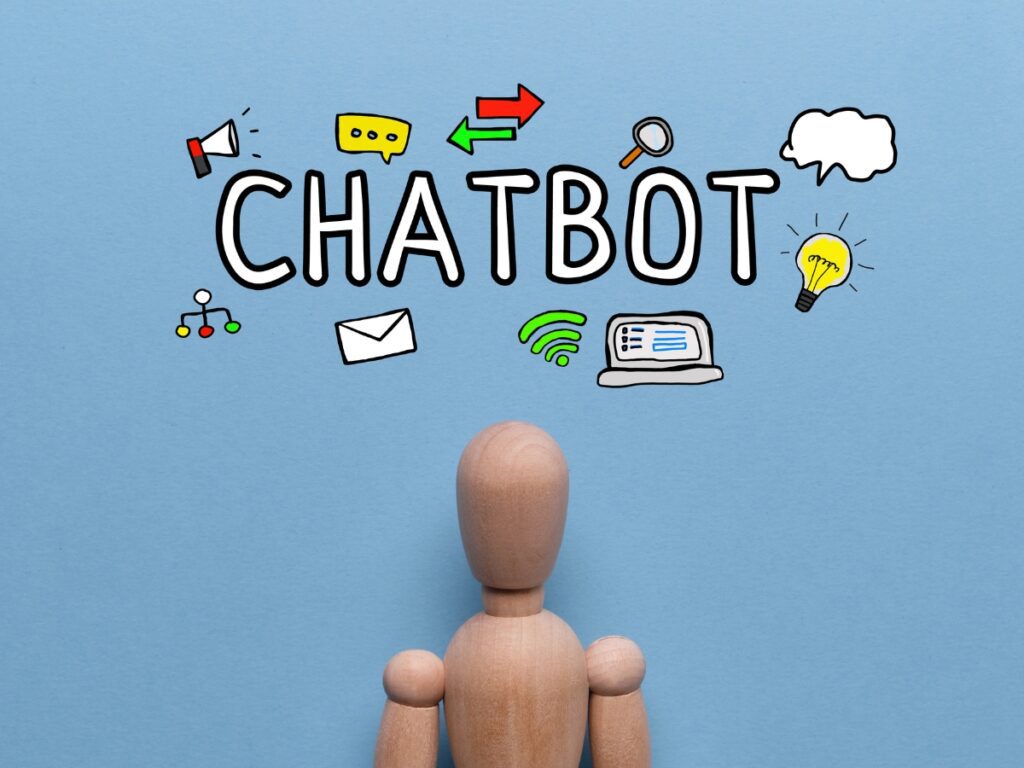
Unifying Operations with Integromat & Zapier for Chatbots
The quest for seamless operations in the business world often hinges on the ability to integrate various tools and platforms. Integromat and Zapier come into play, acting as the linchpins in unifying chatbot operations. Integromat specializes in connecting chatbots to a vast ecosystem of apps, ensuring that data flows are continuous and consistent.
This enhances productivity by providing every function, from customer interactions to backend processes, runs smoothly. Conversely, Zapier for Chatbots streamlines operations by triggering specific actions based on chat interactions. If a customer inquires about a product’s availability, the integrated system can instantly check inventory levels and provide real-time responses.
Such integrations ensure that chatbots become more than just communication tools; they transform into dynamic operational assets.
Optimal Chat Functions with Microsoft Bot Framework
In a world where software ecosystems can determine a business’s success, the Microsoft Bot Framework stands out by optimizing chat functionalities for businesses deeply rooted in the Microsoft ecosystem. This integration ensures that chatbots interact seamlessly across Microsoft’s suite of products and offer enhanced capabilities.
Whether scheduling a meeting via Outlook or pulling data from Dynamics 365, the chatbot becomes an all-in-one tool, fostering efficiency and seamless user experiences. By leveraging the strength of the Microsoft ecosystem, businesses can provide users with a unified platform where every interaction is smooth, intuitive, and productive.

The Evolution of Chatbots: From Simple Bots to Integrated Tools
Once simple text-based tools, chatbots have evolved into sophisticated integrated systems, bridging gaps between various business platforms and devices. Both technological advancements and the ever-changing demands of the digital consumer have driven this evolution.
Gone are the days when chatbots merely answered frequently asked questions. Today, they are integrated with CRM systems, analytics tools, e-commerce platforms, and even voice assistants. This transformation has not only made chatbots more versatile but has also ensured that they offer more value, driving enhanced user experiences and operational efficiencies.
The Historical Context: How Chatbots Have Evolved
Looking back, the inception of chatbots was humble. Early bots were rule-based systems offering preset answers to specific queries. But chatbots started evolving as technology, especially Artificial Intelligence, made leaps. Integrating natural language processing meant that chatbots could understand user intent better.
The rise of platforms like Dialogflow and Microsoft Bot Framework further expanded their horizons, allowing them to be integrated across various platforms and tools. From simple text interfaces, chatbots transformed into dynamic tools that could schedule meetings, pull inventory data, and drive sales.
This historical journey highlights the rapid technological advancements and the adaptability of chatbots, which have constantly molded themselves to meet the ever-evolving demands of businesses and consumers.
The Significance of Integration in Modern Chatbot Applications
In the digital transformation era, the significance of integrating chatbots into modern applications cannot be overstated. Beyond just answering queries, chatbots now serve as the backbone for many businesses, bridging the gap between users and complex backend systems.
Integration enhances a chatbot’s utility by fetching data from various sources, communicating with different software, and automating platform processes. For instance, an e-commerce chatbot integrated with inventory management can provide real-time stock updates to users.
Similarly, a chatbot integrated with a CRM can pull up customer history during an interaction, offering a personalized service. Such integrations elevate the chatbot from a mere conversational tool to a comprehensive solution that drives efficiency, fosters personalization, and optimizes user experiences.

The 6 Essentials of Chatbot Integrations
The landscape of chatbot integrations is vast, but there are six essential areas that every business should consider:
- Internal Communication: Ensuring seamless communication within teams, making tools like the Slack API pivotal.
- Communication Channels Expansion: Broadening reach by integrating with platforms like Twilio Autopilot that cover SMS, voice, and other messaging channels.
- Support & CRM Integration: Enhancing customer service by integrating chatbots with tools like Zendesk or Salesforce.
- Operational Automation: Connecting chatbots to apps and automating tasks using platforms like Integromat or Zapier.
- Data Analytics: Gleaning insights by tying chatbots with analytics tools such as Google Analytics for Chatbots.
- E-commerce and Sales: Streamlining sales processes and customer queries through direct e-commerce integrations like Shopify Chatbot Integration.
Enhancing Internal Communication with Slack API
In today’s fast-paced business environment, internal communication is the lifeline that keeps teams aligned. Slack has emerged as a dominant player, offering a platform where groups can collaborate seamlessly.
Integrating chatbots using the Slack API takes this a step further. It allows for automated alerts task reminders, and even facilitates inter-departmental communications without manual intervention. Imagine a scenario where a sales lead is captured by a chatbot on a website and is instantly relayed to the sales team on Slack.
Such integrations ensure that information flows in real-time, decisions are made swiftly, and the organization stays agile and informed.

Broadening Communication Channels with Twilio Autopilot
In a world where customers engage with brands across various channels, the need to be omnipresent is more crucial than ever. Twilio Autopilot serves this very purpose by integrating chatbots into SMS, voice, and other messaging platforms.
This ensures businesses can reach their audience wherever they are, be it a text message, a voice call, or a messaging app. With Twilio’s robust platform, chatbots can send SMS alerts, respond to voice queries, and handle complex tasks across multiple channels.
This enhances responsiveness and ensures that businesses can offer consistent and unified experiences, irrespective of the communication medium.
Efficient Support with Zendesk API & Freshdesk Integration
Customer support is often the front line of any business, shaping user impressions and maintaining brand trust. Tools like Zendesk and Freshdesk have become indispensable in managing these interactions. These platforms can reach their full potential when integrated with chatbots using the Zendesk API and Freshdesk Integration.
For instance, a chatbot integrated with Zendesk can swiftly fetch user history, ensuring customers don’t have to repeat themselves. On the other hand, with Freshdesk, chatbots can automate ticket generation, escalating critical issues to human agents in real time.
The seamless melding of automated bot interactions with human touchpoints ensures that customer concerns are addressed efficiently, bolstering satisfaction and loyalty.

Remote Operations: Zoom API for Chatbots
The surge in remote work and virtual interactions has spotlighted the importance of tools like Zoom. With the Zoom API for Chatbots, businesses can harness this platform beyond just video meetings. Imagine a chatbot scheduling, starting, or sharing Zoom meetings based on user interactions.
This streamlines the scheduling process and ensures participants have all the necessary details without manual follow-ups. Such integrations can be particularly beneficial for consultants, educators, and businesses that rely on virtual touchpoints, ensuring the shift to remote operations remains seamless and efficient.
Task Management Made Easy with Trello Chatbot Integration
Organizing tasks, managing projects, and ensuring team alignment can be challenging, especially with remote teams. Trello has long been a favorite for addressing these challenges with its visual boards and cards. By integrating chatbots using Trello Chatbot Integration, these capabilities are further enhanced.
Without human intervention, bots can create Trello cards based on user inputs, set reminders, or even update task statuses. For teams, this means staying updated on project progress, automating repetitive tasks, and ensuring nothing falls through the cracks.
The amalgamation of Trello’s intuitive interface with chatbot functionalities ensures that project management remains a breeze.
Gaining Insights with Google Analytics for Chatbots
Data-driven decisions are the backbone of successful operations in today’s digital age. Google Analytics is a premier tool for understanding user behaviors, site interactions, and campaign performances. Integrating chatbots with Google Analytics for Chatbots takes this to a new level. Chatbots can pull real-time data, offer insights into user interactions, and even provide recommendations based on user behavior patterns.
For businesses, this means gaining a deeper understanding of their audience’s preferences, optimizing chatbot interactions based on actual data, and continually refining strategies for better engagement and results. With such integrations, chatbots evolve from mere conversational tools to robust analytical allies.

Diving Deeper: Advanced Integration Use Cases
In the evolving landscape of chatbot technologies, the potential for advanced integrations extends beyond foundational utilities. Innovative applications are emerging, tailored to specific industry needs, operational challenges, and user preferences.
These sophisticated integrations aren’t just about streamlining operations but pioneering new ways to engage, convert, and retain users. By understanding these advanced use cases, businesses can gain a competitive edge, staying ahead of trends and capitalizing on opportunities that chatbot integrations offer.
Driving E-commerce Sales with AI-Driven Recommendations
The e-commerce realm thrives on personalization. Imagine browsing an online store where product recommendations feel curated just for you. With AI-driven chatbot integrations, this becomes a reality. These bots harness user data, analyzing browsing histories, purchase patterns, and even wishlist items.
By leveraging AI, chatbots can make real-time product suggestions, upsell relevant articles, or even alert users about restocks or discounts on their favorite products. The outcome? An enriched shopping experience, fewer abandoned carts, and a notable increase in sales conversions.
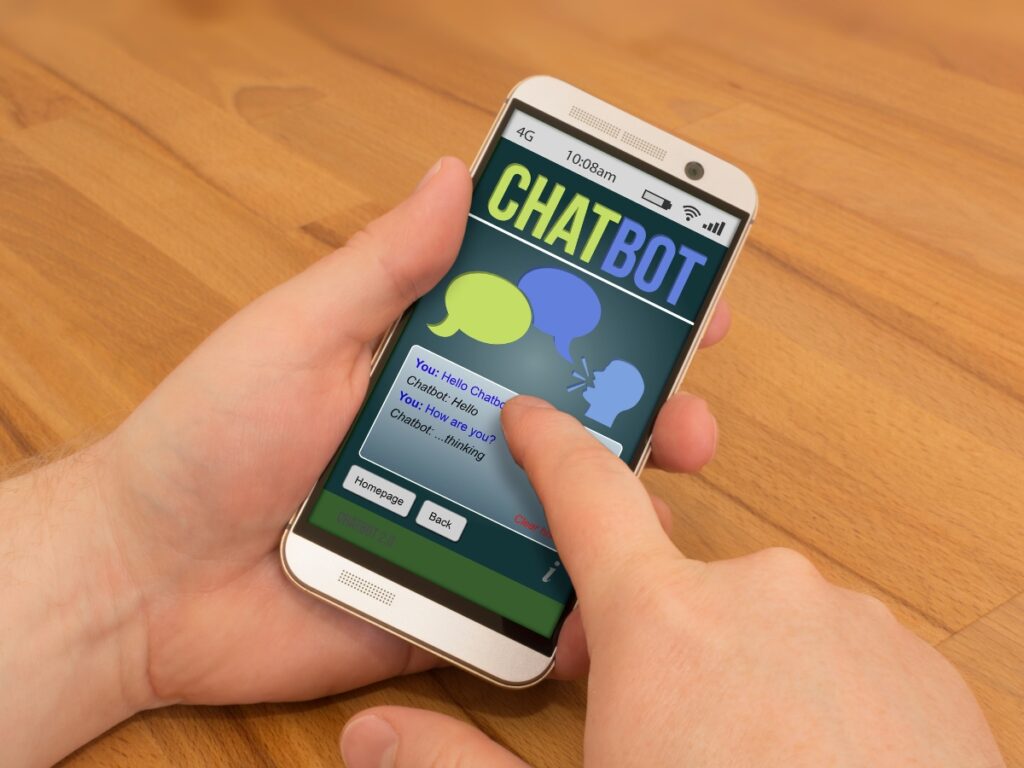
Facilitating Multi-channel Marketing Campaigns
Ensuring brand consistency and effective engagement across channels is paramount in a world of numerous communication platforms. Chatbot integrations play a pivotal role here. By linking with tools like Twilio Autopilot and Zapier for Chatbots, businesses can orchestrate marketing campaigns across emails, SMS, social media, and more.
Whether sending personalized offers, triggering follow-up messages after a chat interaction, or capturing leads from a social media ad, integrated chatbots ensure that marketing efforts resonate cohesively across every touchpoint.
Enhancing User Experience with Adaptive Bot Learning
The hallmark of an effective chatbot lies in its ability to learn and adapt. As users interact with bots, there’s a goldmine of data generated. Adaptive bot learning harnesses this data, allowing chatbots to refine their responses, anticipate user queries, and offer more contextual solutions over time.
This isn’t just about algorithms but understanding the nuances of human interactions. Over time, these bots can identify frequently asked questions, detect user sentiment, and even preemptively address concerns, ensuring the user experience is continually enhanced with every interaction.
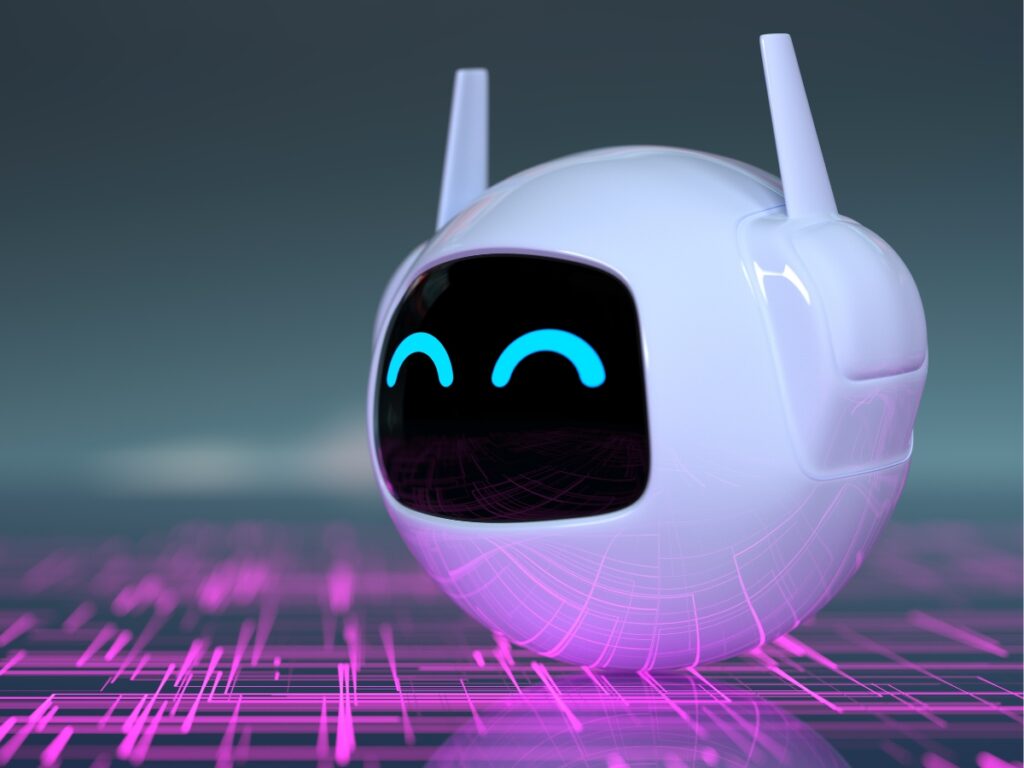
Integrating Chatbots with Essential Business Tools
In the digital age, businesses deploy many software tools to manage various operations, from sales and marketing to customer service and analytics. But to truly unlock the potential of these tools, integration is the key.
Chatbot integrations serve as the bridge, connecting disparate systems, streamlining workflows, and ensuring smooth and timely information flow. When chatbots are integrated with essential business tools, they not only automate processes but also amplify the capabilities of these tools, providing a holistic solution that drives operational efficiency.
Seamless E-commerce with Shopify & WooCommerce Chatbot Integrations
The e-commerce landscape is fiercely competitive. To thrive, businesses must offer seamless shopping experiences, from browsing to checkout. Enter Shopify & WooCommerce Chatbot Integrations. Shopify, a leading e-commerce platform, integrates chatbots to assist shoppers, manage inventory queries, and handle basic customer service tasks.
On the other hand, WooCommerce, a favorite among WordPress users, leverages chatbots to facilitate smooth customer interactions, recommend products and expedite the checkout process. With these integrations, businesses can ensure that customers experience frictionless shopping, increasing loyalty and boosting sales.
Streamlined Sales with Salesforce Chatbot Integration
Sales teams juggle multiple tasks, from lead generation and nurturing to closing deals. Salesforce Chatbot Integration emerges as a game-changer here. Salesforce, a global leader in CRM, integrates with chatbots to automate lead capture, score prospects, schedule follow-ups, and even predict purchase behaviors.
By unifying chatbot capabilities with Salesforce’s robust CRM features, sales processes are automated and optimized. The result? Faster sales cycles improved lead conversion rates and a more personalized approach to every prospect.
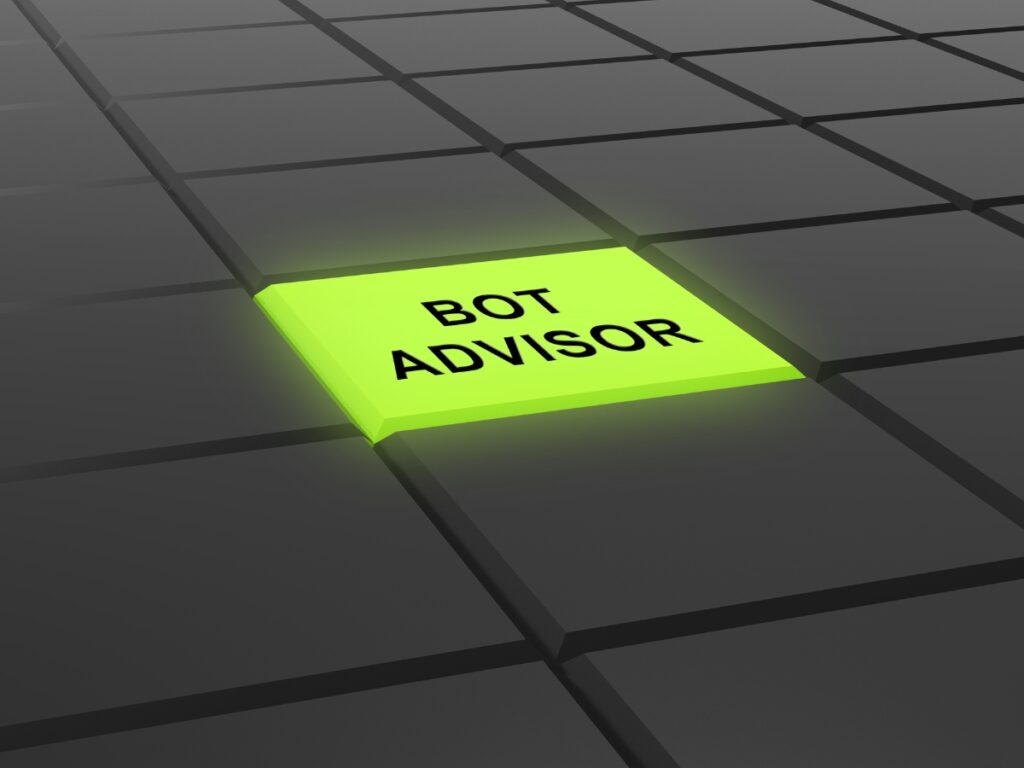
Email Marketing & List Building with Mailchimp Chatbot Integration
Email remains a powerful channel for marketing, but building and segmenting an email list can be challenging. That’s where Mailchimp Chatbot Integration comes into play. Mailchimp, renowned for its email marketing solutions, partners with chatbots to capture subscriber details, segment lists based on user interactions, and even automate campaign triggers.
For instance, if a user inquires about a product via a chatbot, an email campaign related to that product can be triggered automatically. This synergy between Mailchimp and chatbots ensures that email marketing efforts are more targeted, relevant, and effective.

Overcoming Challenges: Addressing Common Integration Pain Points
The integration of chatbots with other business tools undeniably offers many advantages. However, like any technological endeavor, it comes with its challenges. While chatbot integrations streamline operations, businesses must be prepared to address potential pain points that might arise during the integration process.
These challenges range from data security concerns to ensuring real-time data synchronization. But with the right approach, businesses can overcome these hurdles and leverage chatbot integrations to their full potential.
Data Privacy & Security in Chatbot Integrations
In the age of data breaches and cyber threats, ensuring data privacy and security is paramount. When integrating chatbots with platforms like CRM systems, e-commerce platforms, or analytics tools, the risk of data leakage or unauthorized access can increase.
Organizations must ensure that these integrations adhere to stringent security protocols. Implementing robust encryption methods, regular security audits, and ensuring GDPR compliance are crucial. Moreover, businesses must be transparent with their users, letting them know how their data will be used and ensuring that personal information remains confidential.

Ensuring Real-time Sync and Avoiding Data Silos
Data synchronization is vital for the success of chatbot integrations. When a chatbot pulls or pushes data to another platform, real-time sync ensures that information remains consistent across systems. Tools like Integromat & Zapier for Chatbots play an instrumental role here, but challenges can still arise.
Delayed data sync can lead to outdated information, potentially affecting customer interactions. To combat this, businesses must prioritize cloud-based integrations, utilize middleware with real-time syncing capabilities, and regularly monitor data flows to detect and rectify discrepancies.
Training Chatbots for Seamless Integration with New Tools
As businesses evolve, so do their toolsets. Integrating new tools with existing chatbot systems might require retraining the chatbot to understand the nuances of the new platform. It’s not just about technical compatibility; it’s about ensuring that the chatbot can effectively utilize the functionalities of the new tool.
Regularly updating the chatbot’s knowledge base, leveraging AI-driven adaptive learning mechanisms, and continuous testing is pivotal. This ensures that as new devices are integrated, chatbots remain efficient, responsive, and valuable to the business and its users.

FAQ: Addressing Common Queries about Chatbot Integrations
While highly beneficial, chatbot integrations come with their fair share of questions. As businesses look to enhance their operational capabilities, understanding the intricacies of chatbot integrations becomes pivotal.
Addressing frequently asked questions provides clarity, helping companies make informed decisions and optimize their chatbot integration strategies.
The Role of Chatbots in Conversational Marketing
At its core, conversational marketing revolves around real-time, one-to-one connections between brands and customers. Chatbots play an integral role in this paradigm. Through platforms like Chatfuel or MobileMonkey, chatbots engage customers in real-time conversations, answering queries, providing personalized product recommendations, or even assisting with transactions.
They offer instant responses, eliminating the wait times associated with traditional customer service channels. By doing so, chatbots facilitate a more immediate and personalized form of marketing, nurturing leads and enhancing customer relationships in a digital age.
Maximizing Chatbot Potential with Templates: FAQ, Afterhours, Lead Gen
To ensure chatbots effectively address specific business needs, leveraging templates becomes essential. Templates, like FAQ, after-hours, or lead generation, offer pre-defined structures optimized for particular functions.
For instance, FAQ templates prioritize answering common queries, ensuring customers receive accurate and consistent responses. On the other hand, after-hours templates focus on assisting customers when human agents aren’t available, providing essential information, or guiding them to resources.
Lead Gen templates, facilitated by platforms like Zendesk’s Answer Bot or ZoConvert, capture visitor details, nurture potential leads and schedule follow-ups. Businesses can tailor their chatbot experiences by utilizing these templates, ensuring they address distinct operational needs efficiently.

How to Seamlessly Transfer and Organize Chats with Bots
Effective chat management is pivotal for businesses aiming to provide optimal customer experiences. Platforms like Intercom or Exceed.ai offer functionalities that allow companies to transfer chats between bots and human agents seamlessly.
For instance, if a chatbot can’t answer a complex query, it can immediately redirect the conversation to a human agent. Furthermore, organizing these chats is crucial. Businesses can ensure prompt responses and more effective follow-ups by categorizing discussions based on topics, urgency, or customer type.
Leveraging integrations with CRM systems, like Salesforce Chatbot Integration, can also aid in organizing and utilizing chat data, enhancing overall operational efficiency and customer relationship management.
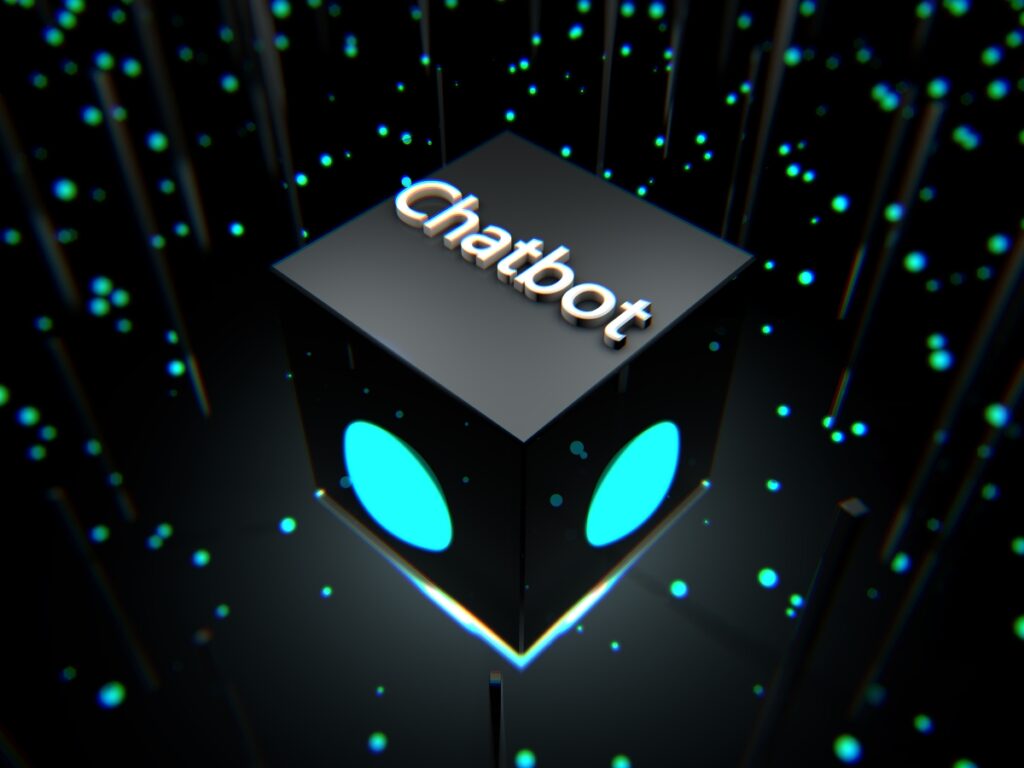
Conclusion: The Future of Business Operations with Chatbot Integrations
As the digital age progresses, the importance of integrating chatbots into business operations has become indisputably clear. They have transitioned from mere interactive tools to robust platforms that streamline processes, enhance productivity, and elevate the customer experience.
Their seamless ability to interlace with numerous business systems and platforms showcases their versatility and potential. Moving forward, the role of chatbots will continue to evolve, and their deeper integration will further transform how businesses operate.
Organizations that embrace these integrations will undoubtedly position themselves at the forefront of innovation, ensuring they remain competitive and responsive to ever-changing customer demands.

You Might Also Like
If you enjoyed this article and received value from it, check out the other Blue Lane Group articles in the Best Chatbots for Customer Service: Blueprint for Success in 2023 series:
- Chatbot ROI: Unlock Unmatched Profits with Top 5 Strategies for Optimization
- Omnichannel Chatbots: Unlock Consistent Engagement with 7 Best Practices
- Chatbot KPIs: 10 Essential Metrics to Drive Optimal Results
- Multilingual Chatbots: Break Language Barriers with 8 Leading Solutions
- Enterprise AI Chatbot Solutions: 7 Key Tools to Supercharge Your Business
- Mastering Chatbot Training: 7 Strategies for Optimal User Engagement
- Chatbot APIs: 6 Leading Options for Seamless Functionality
- Chatbot Scripts: 9 Proven Strategies to Boost Conversions and Engagement
- Rule-Based Chatbots: Drive Consistent Responses with Top 9 Benefits
- Chatbot Success Metrics: Unlock Optimal Performance with Top 10 Insights
- Chatbot Analytics: Drive Excellence with 10 Essential Tools
- Mastering Interactivity: Top 10 Chatbot Frameworks Explored
- Chatbots in Retail: 7 Winning Strategies for Elevated Customer Engagement
- Chatbots for Lead Generation: 6 Best Practices to Transform Your Funnel
- Chatbot Integrations: 6 Essentials for Enhanced Productivity and Operations
- Chatbot UX: Enhance Engagement with These 8 Vital Principles
- Chatbot Security: 7 Essentials to Safeguard Your Business
- Chatbot Development Services: 7 Must-Knows to Boost Your ROI
- Chatbots in Healthcare: 6 Leading Innovations Revolutionizing Patient Care
- NLP for Chatbots: Top 6 Techniques Transforming Chat Experiences
- Benefits of Chatbots in Customer Service: 7 Key Sales Boosters
- 7 Essential Social Media Chatbots for Unmatched Engagement
- Building Chatbots Powered by AI: 5 Proven Techniques for Epic Profits


